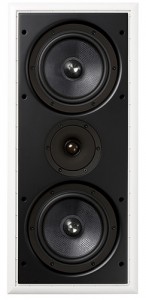 Last night I had the pleasure of attending the first preview of a new musical featuring the lyrics of Mark Campbell, librettist for The Inspector (premiering April 27 at The Barns!). This isn’t a “review” blog, and I’m not a critic. Nor would it be fair to post any of my opinions about a show that’s in previews. (I will say that I had a marvelous time:)) But one aspect of my experience had little to do with the piece, and much to do with what I expected at Signature.
Last night I had the pleasure of attending the first preview of a new musical featuring the lyrics of Mark Campbell, librettist for The Inspector (premiering April 27 at The Barns!). This isn’t a “review” blog, and I’m not a critic. Nor would it be fair to post any of my opinions about a show that’s in previews. (I will say that I had a marvelous time:)) But one aspect of my experience had little to do with the piece, and much to do with what I expected at Signature.
Signature was long known in the DC area for combining Broadway-quality productions with an intimate playing space, using live orchestras with unamplified performers. That was my experience there, as a patron at the old black box theatre, and at their wonderful new space in Shirlington. It has been two years since I’ve seen a show there, though, and I was stunned that the whole thing was amplified. (Obviously this change kicked in a few years ago, but I’m a little slow… I think the Into the Woods that I saw might have been one of the last productions in the old style.)
Clearly, there’s a certain brand of modern musical that is written for amplified and electronic forces. Trying to do a show in the Rent mold without microphones is kind of insane. But the musical I saw has a partial retro feel and was written for real voices and a completely acoustic orchestra of strings, winds, percussion and keyboard. I was sitting in the back half of the house, but I was still only about 30-40 feet away from the singers. Yet every decibel I could hear came from speakers above the stage, the amplified sound eclipsing everything else.
The big advantage? Well, clearly, there wasn’t a single thing that was so soft as to be inaudible. You could hear every consonant, every breath. You don’t miss a single thing this way.
But (at the risk of sounding like an old fart, which, strictly speaking, I suppose I am…), I feel we’ve given up a lot.
The overall decibel level was compressed into a range at which the crowd scenes didn’t sound that much louder than the ballads. You lose a lot of dramatic range that way, and everything feels too much the same even when it’s not.
During the ensemble numbers, I often had to scan the stage to see whose lips were moving, as everyone’s sound came from exactly the same place at the top of the proscenium.
The one-on-a-part orchestral musicians were amazingly fabulous, but the amplification rarely gave the band a chance to outline the various colors and mixtures that the composer intended.
And finally, the disembodied voices kept me from really integrating them into the characters and actors themselves, in a way I’ve come to expect with acoustic singing. I want to see and hear and feel the voice as it comes out of the body, and displacing it is somehow disorienting on more than an aural level.
Now, none of this is to say that I took issue with the sound design, the equipment, the general way in which this all was done. Frankly, it’s kind of amazing to me that sound designers and engineers can do this job so well. That kind of criticism is above my pay grade, and I’m not an expert. It seemed to be done perfectly well, but I had gone to the theatre expecting intimacy and I got something that was in-my-face.
As the head of a company that will be performing Sondheim with amplification this summer, I realize that I shouldn’t get on a horse that’s too high. We did this same piece in our chamber theatre 6 years ago and exulted in performing it without a net. (One critic called it “blissfully unamplified.) But singing in a 7,000-seat space with a 75-piece orchestra is quite another thing; and when we raise the razor high in July, it will be with body mics.
Well, this has been a bit of a rant, but the topic has consumed many of my brain cells today, and getting it down into words might help me move on to my real work:) I guess I’m happy to work in an acoustic art form, and I suppose I’ve gotten pretty attached to some of its assets.
Add Comment